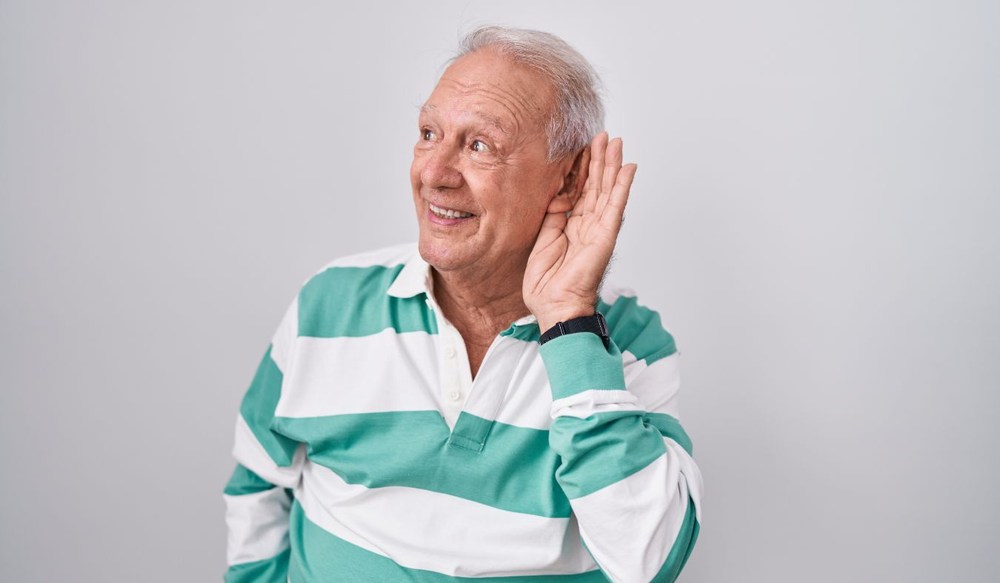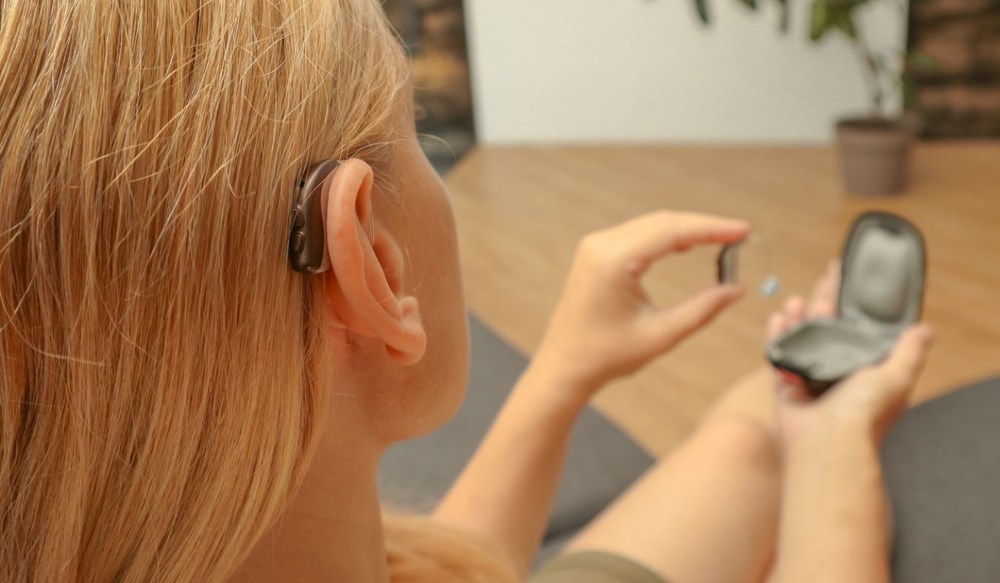How to Create a Quiet Space for Optimal Hearing Health
Everyday sounds in your environment can have a greater effect on your

By: admin | March 26, 2024
Living with hearing loss can present its own unique challenges. But thanks to tools like hearing aids, these challenges can be mitigated. These devices amplify sounds, making them easier to comprehend. But, what happens when it comes to water-related activities? Can hearing aids withstand a splash or two, or even a full dunk? It’s vital to know if your hearing aids are waterproof, especially if you love swimming, showering or if you live in a rainy climate. After all, safeguarding this crucial piece of technology is vital for your everyday communication and overall quality of life.
A hearing aid is designed to improve hearing by amplifying sound for individuals with hearing loss. At its core, a hearing aid operates by capturing sounds from the environment using a microphone. Once the microphone picks up sounds, it converts them into electrical signals, which are then processed by a sophisticated computer chip inside the hearing aid.
This processing stage is crucial, as it involves analyzing and modifying the incoming sound signal in real-time. Various algorithms are applied to enhance speech clarity, reduce background noise and adjust volume levels according to the wearer’s specific hearing needs. This customization ensures that sounds are amplified appropriately across different frequencies, addressing the individual’s unique pattern of hearing loss.
After processing, the amplified sound signal is transmitted to a receiver, also known as a speaker, located inside the hearing aid. The receiver converts the electrical signal back into acoustic vibrations, which are then delivered to the inner ear. Once in the inner ear, the amplified sound vibrations stimulate the hair cells in the cochlea, initiating the process of transduction.
Hair cells in the cochlea convert the mechanical energy of sound into electrical signals, which are then transmitted to the auditory nerve and processed by the brain as sound perception. By amplifying and enhancing incoming sound signals, a hearing aid helps individuals with hearing loss overcome the limitations of their impaired auditory system.
It’s important to note that while a hearing aid can significantly improve communication and overall quality of life for those with hearing impairment, it cannot fully restore normal hearing. However, advancements in technology have led to the development of increasingly sophisticated hearing aid features, like wireless connectivity, rechargeable batteries and customizable sound settings, further enhancing their effectiveness and usability for users.
Water-resistant hearing aids are designed to withstand exposure to moisture to a certain extent, providing a level of protection against sweat, humidity and light splashes. These devices are constructed with special coatings and seals to help repel moisture and prevent it from penetrating the internal components. While water-resistant hearing aids can handle everyday situations, like sweating during physical activity or exposure to humid weather conditions, they are not intended to be submerged in water.
Conversely, it’s important to clarify that truly waterproof hearing aids do not currently exist on the market. While the terms “waterproof” and “water-resistant” may appear synonymous, particularly in other contexts, the distinction is crucial in hearing aids. While water-resistant models offer some level of protection against moisture, including sweat and humidity, they cannot withstand being fully submerged in water for extended periods. Therefore, individuals should exercise caution and avoid exposing their hearing aids to water beyond what they are designed to handle, to prevent damage to the device.
Moisture poses a significant threat to the performance and durability of hearing aids. When moisture infiltrates the internal components of the device, it can lead to a range of issues that compromise its functionality. For instance, corrosion may develop on metal components like battery contacts or circuitry, hindering electrical conductivity and causing erratic behavior or device failure. Delicate electronic parts like the microphone and receiver can sustain damage from moisture exposure, resulting in reduced amplification or distorted sound quality.
Moisture accumulation in microphone and receiver ports can block sound transmission, leading to muffled or distorted sound output. Premature battery drain or decreased battery performance may occur if moisture penetrates the battery compartment, necessitating frequent replacements. Additionally, moisture combining with earwax inside the ear canal can lead to excessive buildup around the hearing aid, causing feedback, discomfort or irritation.
To reduce the adverse effects of moisture on hearing aids, proactive measures are crucial. Using accessories like sweat guards or hearing aid sleeves can shield the device during physical activity or humid conditions. Storing the hearing aid in a dry, ventilated container or hearing aid dehumidifier overnight helps remove excess moisture. Regular cleaning and maintenance, including earwax removal and inspection for signs of moisture, are essential for preserving performance and longevity. By implementing these preventive measures, individuals can minimize the risk of moisture-related issues and ensure optimal performance of their hearing aids.
There are a few misconceptions about water-resistant hearing aids that need to be addressed. Misunderstandings can lead to confusion and misuse of these devices.
One common myth is that water-resistant hearing aids are immune to all forms of water exposure. This isn’t the case. While these devices can handle being submerged in water for short periods, they’re not designed to be continuously exposed to water or worn during activities like swimming or showering.
Another misconception is that all hearing aids have the same level of water resistance. In reality, the level of water resistance varies greatly from one model to another. Some devices may only be able to withstand light moisture, while others can survive full immersion for a limited time. It’s important for you to know your device’s limitations and follow the manufacturer’s guidelines for care and maintenance.
Now, let’s look at the fascinating technology that makes water-resistant hearing aids possible. This technology is a game-changer for those who love water activities or live in humid climates.
The secret lies in the nano-coating that covers the device. This ultra-thin layer repels water, protecting the delicate internal components from moisture damage. It’s like an invisible shield for your hearing aid! However, while this coating provides significant protection, it’s still important to follow proper care instructions and avoid prolonged exposure to water.
Life is full of unexpected moments. One minute you’re enjoying a sunny day, the next you’re caught in a sudden rain shower. With water-resistant hearing aids, these surprises become less of a worry. Water-resistant hearing aids are designed to handle these unpredictable moments. They can withstand that sudden downpour on your walk home or the accidental splash while washing dishes.
Not only do they survive these incidents, but they also continue to provide clear sound quality even in damp conditions. So whether you’re out for a jog on a misty morning or spending an afternoon gardening with the sprinkler on, your waterproof hearing aids keep up with you, ensuring that you never miss out on life’s little sounds. But remember, even though these devices are robust and resistant to water, they still need regular care and maintenance to stay in top shape!
Caring for your hearing aids after exposure to water is crucial to prevent potential damage and maintain their performance. Even though hearing aids are not waterproof, taking immediate steps after water exposure can help mitigate any adverse effects. If your hearing aids have been submerged or exposed to moisture, here are some steps to follow:
Firstly, remove the hearing aids from the water or moisture source as soon as possible. Do not attempt to turn them on or use them until they have been thoroughly dried and assessed for any damage. Wipe the exterior of the hearing aids with a dry cloth to remove any visible water or moisture.
Next, open the battery compartment and carefully remove the batteries. Inspect the battery contacts and interior of the compartment for any signs of moisture or corrosion. If moisture is present, use a dry cloth or cotton swab to gently dry the contacts and compartment.
Allow the hearing aids to air dry thoroughly in a warm, dry environment. Avoid using heat sources like hair dryers or microwaves, as excessive heat can damage the electronic components of the device. Placing the hearing aids in a hearing aid dehumidifier or using desiccant drying capsules can help expedite the drying process and remove any remaining moisture.
Once the hearing aids are completely dry, reinsert the batteries and perform a thorough functional test to ensure they are working properly. Pay attention to any changes in sound quality or performance that may indicate water damage.
If you notice any issues with your hearing aids after exposure to water, like changes in sound quality, intermittent operation or complete malfunction, contact your audiologist for assistance. They can assess the extent of the damage and perform any necessary repairs or adjustments to restore the functionality of your hearing aids.
Regular check-ups with your audiologist are an important part of maintaining your hearing aids. These appointments are not just about ensuring your device is functioning correctly, but also about making sure it’s still the right fit for your hearing needs.
Your audiologist can check for any signs of wear and tear, clean the device and make any necessary adjustments. Regular check-ups also give you the opportunity to ask any questions or raise any concerns you might have about your hearing aids.
Despite your best efforts, there may be times when your hearing aid needs professional attention. If you notice a decrease in sound quality, intermittent functionality or complete failure after exposure to water, it’s time to consult an audiologist.
They can diagnose the issue and recommend appropriate steps for repair or replacement. Attempting to fix a malfunctioning hearing aid on your own could lead to further damage. So, when in doubt, seek professional help!
Understanding your hearing aids, especially their level of water resistance or waterproof capabilities, is key to maintaining their optimal performance. While some models can withstand a certain degree of moisture exposure, it’s always best to take precautionary measures and follow manufacturer guidelines for care and maintenance.
If you have further questions about your specific hearing aid model or if you’re considering investing in a new device with more robust water-resistant features, our team at Pittsburgh Ear is here to assist. We provide comprehensive guidance tailored to your unique needs and lifestyle, just give us a call at one of our convenient locations:
Pittsburgh, PA: (412) 321-2480
Our dedicated team of audiologists are ready to help ensure that you’re equipped with the right knowledge and tools for managing your hearing health effectively.
Tags: hearing aid basics, hearing aid repair, hearing aid styles

Everyday sounds in your environment can have a greater effect on your
By: admin | November 18, 2025

When planning an outdoor trip, most people focus on weather, gear and
By: admin | September 24, 2025

When our hearing begins to decline, we start to see impacts trickle into
By: admin | May 23, 2025
